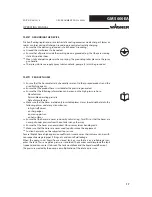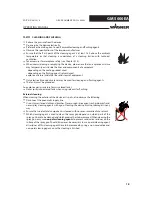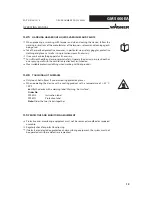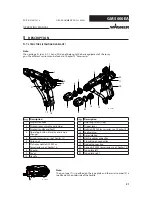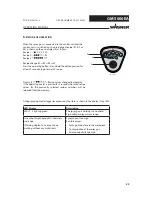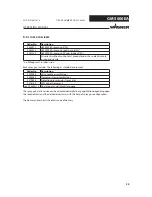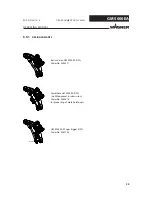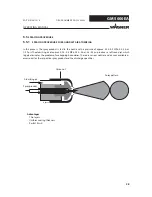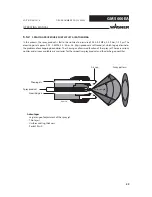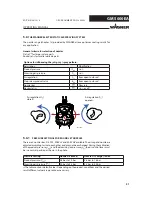
16
GM 5000EA
OPERATING MANUAL
EDITION 04/2016
ORDER NUMBER DOC2344499
4.2
SAFETY INSTRUCTIONS FOR STAFF
Always follow the information in this manual, particularly the general safety instructions
and the warning instructions.
Always follow local regulations concerning occupational safety and accident
prevention.
Anyone fi tted with a pacemaker must not enter the high-voltage area!
4.2.1
SAFE HANDLING OF WAGNER SPRAY DEVICES
The spray jet is under pressure and can cause dangerous injuries.
Avoid injection of paint or fl ushing agents:
Never point the spray gun at people.
Never reach into the spray jet.
Before all work on the device, in the event of work interruptions and functional faults:
- Switch off the energy/compressed air supply.
- Relieve the pressure from the spray gun and device.
- Secure the spray gun against actuation.
- In the event of functional faults, remedy the fault as described in the "Troubleshooting"
chapter.
The liquid ejection devices are with need, at least however every 12 months to examine
by experts (e.g., WAGNER Service Technician) in accordance with the guidelines for
liquid ejection devices (DGUV regulation 100-500).
- For shut down devices, the examination can be suspended until the next start-up.
Carry out the work steps as described in the "Pressure Relief" chapter:
- If pressure relief is required.
- If the spraying work is interrupted or stopped.
- Before the device is cleaned on the outside, checked or serviced.
- Before the spray nozzle is installed or cleaned.
In the event of skin injuries caused by paint or fl ushing agents:
Note the paint or fl ushing agent that you have been using.
Consult a doctor immediately.
Avoid risk of injury from recoil forces:
Ensure that you have firm footing when operating the spray gun.
Only hold the spray gun briefl y in a position.
Ensure that there are no ignition sources such as naked fl ames, sparks, glowing wires,
or hot surfaces in the vicinity. No smoking.
Ensure that the pipe joints, hoses, equipment parts and connections are permanently,
technically leak-proof:
- Periodic preventative maintenance and service (replacing hoses, checking tightness
strength and connections etc.).
- Regular monitoring of leaks and defects via visual inspection and odor testing, e.g.,
daily before commissioning, at the end of work or weekly.
In the event of defects, immediately bring the device or system to a stop and arrange
to have repairs carried out immediately.
















